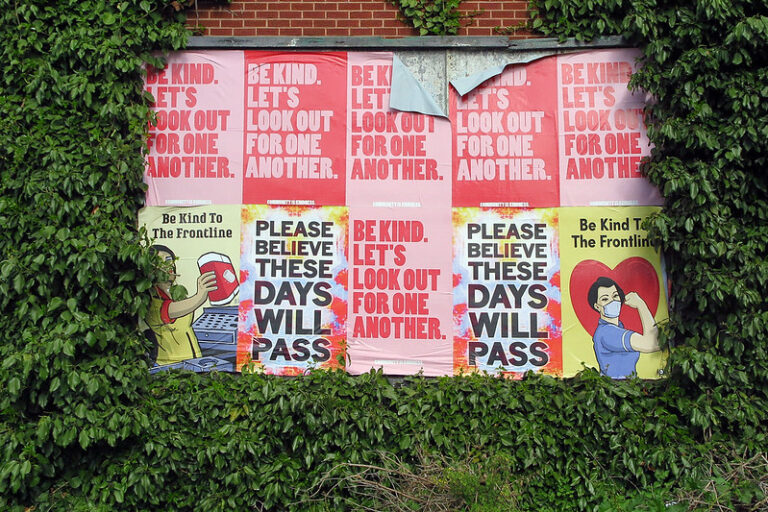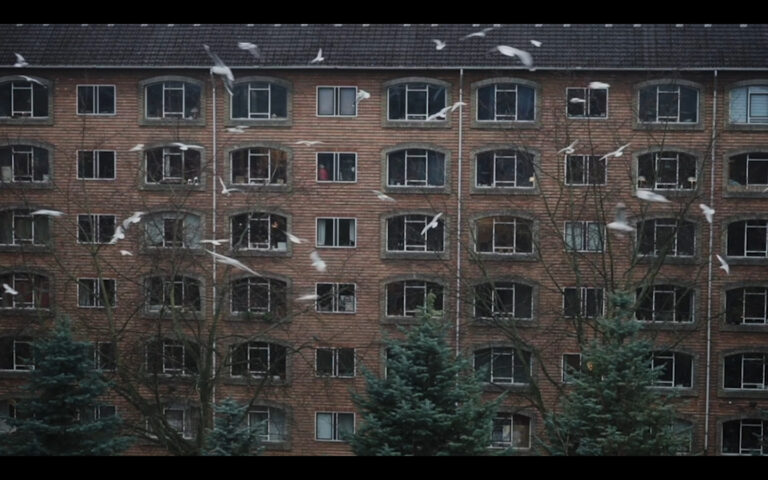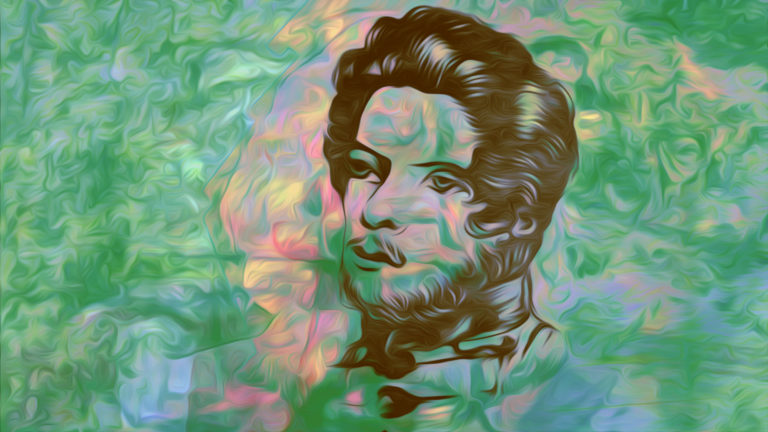Cringe theory is a framework intended to make sense of cringe as a cultural and political phenomenon that has come to condition how disability is understood in the contemporary American public imagination. Informed by Silvan Tompkins’ approach to affect, cringe theory has two distinct modalities. First, it can be understood as a suprastructure of feeling, a reflex tethered to our affective anatomy, which regulates the relationships between and among our emotions. This modality of cringe theory operates internally, telling us when to cringe, and each of us has our own, even if they do often resemble one another. The second of cringe theory’s modalities comes into view as an analytic that traces cringe from the moment of its emergence through the ripple of its repercussions. As an analytic, cringe theory helps us to understand how cringing operates as a culturally conditioned response to the world and as evidence of our affective relations to normative power. By examining both the internal and analytic forms of cringe theory, I show that cringing is a deeply political experience, one that indexes affect as an internalized system of governance by which we come to feel with normativity. Disability is a perfect object for this kind of affective governance, given how often it is used to signify the porous boundary between the purely aesthetic and the resolutely political. By examining a series of recent, popular representations of disability that attempt to elicit cringing from the audience, I argue that we are increasingly encouraged to know disability through our felt or affective perceptions of it. Cringe theory reveals one route through which these affective perceptions are engendered, alongside the affective norms that condition how we are all feeling our way through life.
Keyword: affect
The Future Isn’t Now: Impossible Action in Political Scholarship
In a world of negation, it is exhilarating to imagine possibilities. Such is evident in the strain of critique that asserts there is something radically productive in opening up possibilities. This makes sense: critical theory seeks to illuminate something beyond endless torrents of death and destruction. But, this essay contends, the thrill of possibility-creation has created a new aporia: the affect gesture of possibility risks overshadowing the realization of radical possibilities. Various strains of scholarship presume that scholarly politics is a matter of perceiving and awakening possibilities. The impulse is most readily clear in utopianist scholarship like that of José Esteban Muñoz, but it’s also evident in work by Saidiya Hartman, Eve Kosofsky Sedgwick, and even Rita Felski. All these materials propose that cultural materials can coordinate possible worlds, and by extension, scholarship competency is to schematize them. But, I argue, the scholarship that follows these thinkers risks becoming trapped by possibility. It’s captivating to imagine new ways of being or living or knowing, but there exists neither the professional incentive nor the affective discipline to realize those possibilities. In our reverie at imagining the construction of a better world, our blueprints don’t necessarily reach the builder—and the indulgence of possibility risks sliding back into despair. This essay does not argue for dismissing the scholarship above, but rather suggests we haven’t read them well enough. Muñoz, Hartman, and Sedgwick are not drunk on hope; their openness to possibility comes from the mute agony of living in an unlivable world. Although a variety of material factors stand in the way of scholar-activism, this affective trap remains one of the most pressing—for if we do not recognize the feelings that structure political scholarship, we will only be playing a language game, projecting possibilities that could never come to fruition.
“A Pinch of Imagination”
There is a rise in events connecting people to food, the sources of food, and the materiality of food––including all its affective and sensorial qualities. We have found that this not only translates into food politics but into a wide array of power dynamics surrounding food that connect our past to our imagined/desired futures, especially as we engage with conversations that become nodes that facilitate connections across cultures. The connection lies beyond the ingredients but in the affective agency within them and their relationship to each other. We focus on how we connect through the ingredients, how we measure them, and how they exist in relation to one another, as ingredients strengthen the affective connection with food materiality, as we feel the textures and tastes in order to know if you put the right quantity. Our proposal is a provocation of how transnational creative practices are produced and translated through a cocreated recipe whereby talking through a common recipe (and how that recipe came to be) we disclose and imagine glocal similarities between Mexican food and Palestinian food.
“Whose house? Our House!”: Streaming Revolution During the US Capitol Riot
This article analyzes videos shared during the United States Capitol riot on January 6, 2021, where supporters of then-President Donald Trump stormed the US Capitol Building in an attempt to disrupt the certification of Joseph Biden’s presidential victory. We analyzed videos distributed on Facebook, Twitter, Parler, Snapchat, DLive, Twitch, and Periscope to examine how participants structured a narrative of their actions as a form of political revolution. We assess how these videos draw on affective configurations to demonstrate the ways that cultivation of affect helps to drive far-right dissent, and we assess the role of media technologies in recording and sharing those affects across networked publics.
Review of Media and the Affective Life of Slavery by Allison Page (University of Minnesota Press)
In Media and the Affective Life of Slavery, Allison Page interrogates how media culture from the 1960s to the present has mobilized the legacy of slavery for affective governance, or “the production and management of affect and emotion to align with governing rationalities” (6). Throughout the book, Page’s analysis succeeds in providing a rich mapping of the converging interests of state actors, media producers, educational organizations, and other stakeholders as they narrate their own desire to manage emotions in the wake of the civil rights movement and to maintain white supremacist order.
On Navigating Paranoia, Repair, and Ambivalence as Crip Pandemic Affects, Or, I’m So Paranoid, I Think Your COVID Test Is About Me
How do my “hermeneutics of suspicion” color this current crisis? In this auto-theoretical essay, I reflect upon the blend of judgment, suspicion, and paranoia that have settled into my body-mind this past year, and how these feelings shape my engagement with people, institutions, and systems. I have been taught that “judgment” is an essential aspect of immigrant and crip safety. Recently, it has become my (crip)epistemology, and I cannot decide whether this is for better or worse. On the one hand, suspicion is productive. It has kept me and my loved ones alive in a time of deliberate death. On the other, it frustrates, disrupting my capacity for connection. I check my temperature constantly, I hear the guilt in my voice when my family in India tell me they have not left the apartment in months, I spend precious time with friends calculating their risk relative to mine, I go to protests but am afraid of the consequences of my solidarity. Drawing on Eve Sedgwick’s essay on paranoid reading practices, Patricia Stuelke’s Ruse of Repair, Sianne Ngai’s work on ugly feelings, Nikolas Rose’s analyses of somatic ethics, and Mel Chen’s theory of racialized toxins, I explore the modalities that paranoia has both enabled and disabled for me. I examine my ambivalent relationship with repair—some reparative practices like mutual aid sustain queer/crip/immigrant community while others like cure constrict our lives. This piece aims to tease out the tensions latent in crip worldmaking between suspicion and generosity, public health and communal care, and paranoia and repair.
Introduction—Corona A(e)ffects: Radical Affectivities of Dissent and Hope
Right from the emergence of the ongoing COVID-19 pandemic, national governments and international institutions have been relentlessly qualifying it as an “unprecedented” event. We have been told that the virus sees no color or class and that equal sacrifices from each one of us are and continue to be necessary to contain its spread. We have been instructed to look at the virus in scientific, neutral terms as if we had equal chances of being affected by it—as if its routes, that is, did not follow the roots of sedimented histories of oppression, exploitation, dispossession, and structural violence. This forum departs from such narratives to look at how the current COVID-19 pandemic intersects with other pre-existing and enduring pandemics, such as those produced by racism, capitalism, and speciesism. In building on the emerging critiques by Indigenous, feminist, Black, and queer academics, movements, and activists, the contributions it hosts offer multimedia reflections on affects triggered or evoked by the current pandemic, such as rage, fear, despair, restraint, care, and hope. Coming from different parts of the globe and disciplinary approaches, authors convey the “Corona(virus) a(e)ffects” in multisensorial ways, combining written essays, poetry, videos, and photographs. By contextualizing the ongoing COVID-19 pandemic within a historical legacy of structural violence within and across species, this forum moves beyond deceitfully single-focus and temporally flat narrations. In so doing, it provides a space for the expression of radical affectivities of dissent and hope that its outburst has arguably made only more visible and pressing.
On Witnessing a Riot
In the midst of the COVID-19 pandemic, the murder of George Floyd by Minneapolis police has sparked protests and riots around the world. The policing of the pandemic reveals the racial biases inherent to law enforcement and state-led discipline, laying bare ongoing infrastructural inequalities that render racialized subjects more vulnerable to premature death at the hands of police and public health systems alike. With the video embedded in the article, we guide readers through thirty-nine seconds of rioting in Los Angeles on May 31, 2020, shot on a mobile phone and circulated virally on Twitter. The affected body of the witness indexes both the intensity of the event and the embodied experience of the witness, establishing a relation between the two. The experiential aesthetics of the video exceeds the content and this affectivity circulates with its mediation and movement through networked platforms. Such forms of affective witnessing allow for an attunement to political struggle that occurs through what Hortense Spillers would call the analytic of the flesh. Thinking at the intersection of Black studies, affect theory, and media studies, we argue that the flesh is an affective register crucial to the building of global anti-racist solidarities towards abolition.
Feelings, Fascism, and Futures
The COVID-19 pandemic has exposed some of the most glaring inequalities within nations and across the globe. While the disruption caused by the pandemic has given rise to hopes for a cultural reset to address these structures of inequality—captured compellingly by Arundhati Roy in her vision of the pandemic as a portal—the sediments of inequality have proven hard to erode. In this contribution, I explore this regressive impulse by honing in on the affect of restraint. While restraint is not ordinarily characterized as such, in the pandemic it has been a defining feature of our lives. However, it was not afforded equally. I begin by showing how restraint has become racialized, serving as a political tool to suppress protests, notably Black Lives Matter. I then move to show how globally, too, there has been an imbalance in who is—and what countries are—expected to practice nonintervention, linking both domestic and international uses of restraint to these preexisting structures of inequality. I end by proffering a vision for how, despite all these obstacles, the pandemic has also offered ways to bypass the state and form new social formations.
Bewilderment, Hope, and Despair
This essay is a collective investigation of affective experience, bewilderment, and imagery during the COVID-19 situation in Copenhagen, Denmark through multivocal writing and filmmaking. By letting go of the promises of normality, both in thinking and creating, the writers explore various personal, academic, and aesthetic states of affect—hope, despair, desire, and frustration, like temporary landscapes or glimpses of a new world. Feeding on boredom and fear of being isolated, left inactive and frustrated, naive, or hopeful, this essay points into a different and shivering set of changes, personal and societal, that we are currently facing, and illustrates how such changes, full of pain or despair, might also open new becomings of desire and hope.
Plants, Vegetables, Lawn: Radical Solidarities in Pandemic Times
This essay presents photos and words illustrating practices of care in homes shared by humans and plants during the COVID-19 pandemic. Drawing on interviews with plant carers, I highlight how humans (re)discovered plants as kin during forced social isolation. I reflect on how plants provided joy, hope, and reassurance during crisis, enabling strong affective bonds with their human carers. I read the creation/cementing of affective bonds between humans and plants for its political significance, and I interrogate the activity of making home/kin with plants as the emergence of interspecies solidarities, which challenge anthropocentric narratives of worldmaking and reinsert non-human beings as central to the making of more just and inclusive futures.
Crip Twitter and Utopic Feeling: How Disabled Twitter Users Reorganize Public Affects
Conceptually, online activism remains a divisive concept: detractors decry it as low-commitment “slacktivism,” and proponents argue that the Internet is a powerful platform for organizing. Particularly for disabled persons, the Internet provides new avenues for engagement and organizing work by allowing disabled persons in disparate places to connect with each other. While the intersection of disability activism and online activism remains underexplored, existing literature remains anchored to the notion that disabled online activism’s greatest impact is in organizing physical protests and actions. This paper scrutinizes the actual work and impact of three disabled Twitter activists, and wages an argument based on how Twitter activists make other users feel. Particularly, this paper synthesizes affect theory with Althusser’s notion of “interpellation” and revises Michael Warner’s theory of “publics” to argue that such disabled Twitter activists and their followers mutually generate networks distinguished by shared feelings (affective networks, as this paper terms them), and that these networks are constantly being renegotiated and transforming the feelings of their members. The paper makes four key interventions: first, it writes against Michael Warner’s initial reluctance to include the Internet in his theory of publics, by arguing that Twitter followings model Warner’s publics. Second, it performs close readings to describe both how Twitter users’ writings generate affective networks and what activist impact these affective networks have. Third, it identifies and describes radical optimism and the utopic work of “demanding” as constituents of Twitter users’ affective networks. Finally, this paper examines and describes how affective networks shift with each tweet, and how such writings transform the feelings that constitute those affective networks. Arguing in part from my own subjectivity as a disabled Twitter user, I contend that Twitter enables disabled users to organize their feelings according to the feelings they want to have, and the feelings they think they ought to have.
Review of Death beyond Disavowal: The Impossible Politics of Difference by Grace Kyungwon Hong (University of Minnesota Press)
As social issue fatigue threatens to isolate even the most robust justice scholars and activists, Hong asks us to hold our contemporary complexities in unresolved tension. She invites us back to the table, asking us to attend to how our lives and others’ deaths are related and to how neoliberalism works to redefine, and obfuscate, these connections. To understand how racialized, sexualized, and gendered differences are produced, Hong argues that exploring death, as well as the work of neoliberal technologies to erase marginalized memories of death, reveals the uneven distribution of precarity and violence. The book will benefit any seminar or study that seeks to parse the tangled complexity of contemporary oppressions in and through U.S. American political structures, as well as any who seek an exemplar of how to do so with academic rigor, exceptional feminist citation practices, and ethical elegance.
Vital Forces: Marx and the Tension of Capitalist Affect
This article juxtaposes Marx’s critique of capitalism with recent developments in affect theory. My central argument is that a critique of the tension of capitalist affect is fundamental to a Marxian account of capital: on the one hand, capitalism amplifies the potential affective capacity of bodies through its development and organization of productive forces; on the other, it captures this increase to enrich the bourgeoisie, immiserate the proletariat, and reproduce capitalism. I also sketch the ways that an affective interpretation can provide insight into anti-capitalism resistance and post-capitalist life within Marx’s theoretical and philosophical project. Ultimately, reading Marx’s critique of capitalism for its resonances with Deleuzean-Spinozan affect theory not only generates a newfound apprehension of the affective register of that critique, but also adds to the critical repertoire of affect theory.













